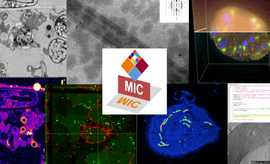Iron status and root cell morphology of Arabidopsis thaliana as modified by a bacterial ferri‐siderophore
AbstractWe previously provided evidence for the contribution of pyoverdine to the iron nutrition of Arabidopsis. In the present article, we further analyze the mechanisms and physiology of the adaptations underlying plant iron nutrition through Fe(III)‐pyoverdine (Fe(III)‐pvd). An integrated approach combining microscopy and nanoscale secondary ion mass spectrometry (NanoSIMS) on plant samples was adopted to localize pyoverdine in planta and assess the impact of this siderophore on the plant iron status and root cellular morphology. The results support a possible plant uptake mechanism of the Fe(III)‐pvd complex by epidermal root cells via a non‐reductive process associated with the presence of more vesicles. Pyoverdine was transported to the central cylinder via the symplastic and/or trans‐cellular pathway(s), suggesting a possible root‐to‐shoot translocation. All these processes led to enhanced plant iron nutrition, as previously shown. Overall, these findings suggest that bacterial siderophores contribute to plant iron uptake and homeostasis.


